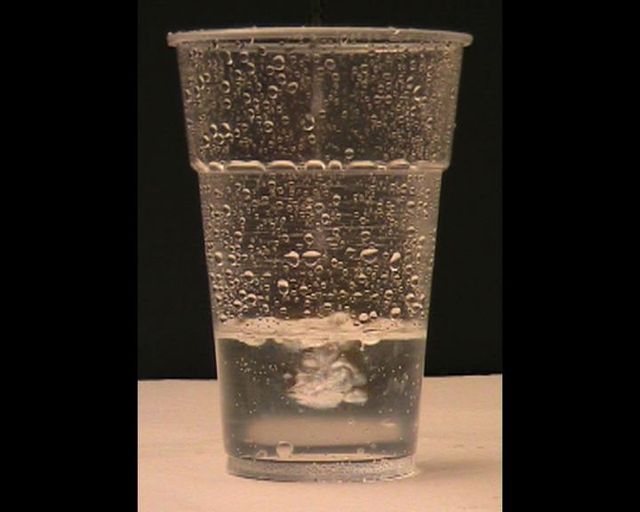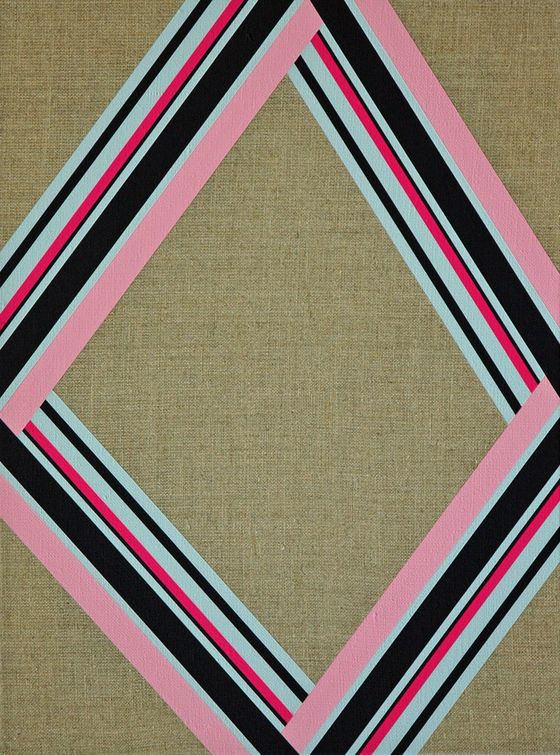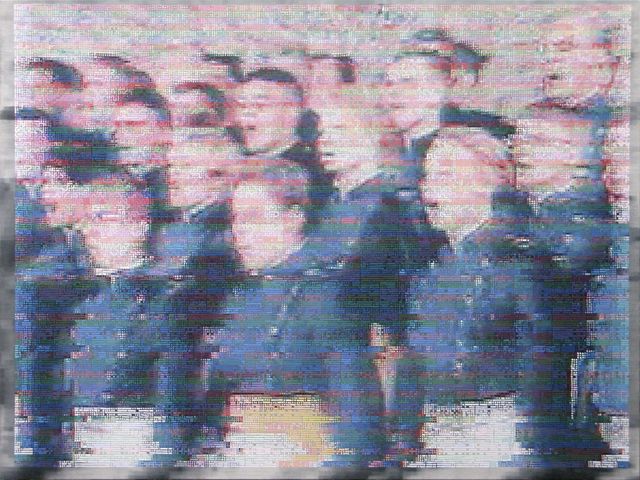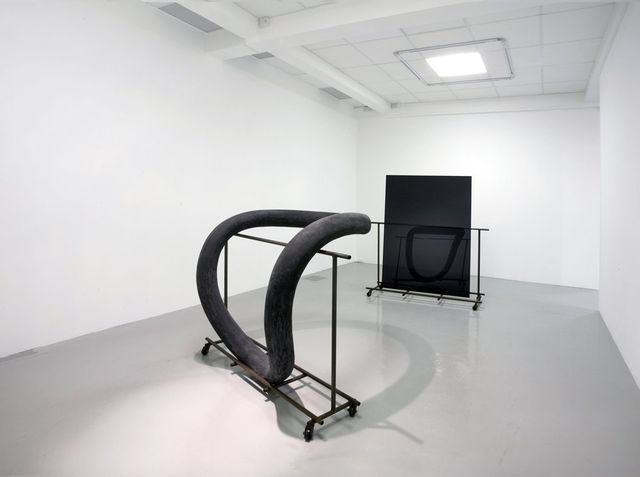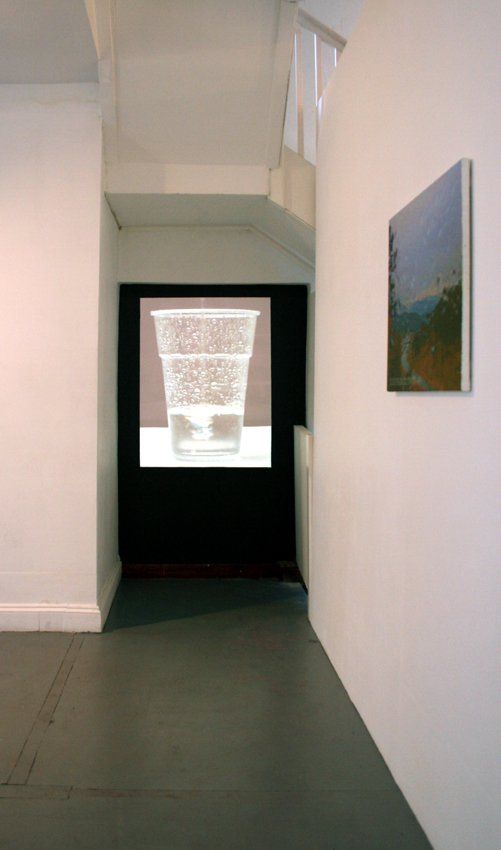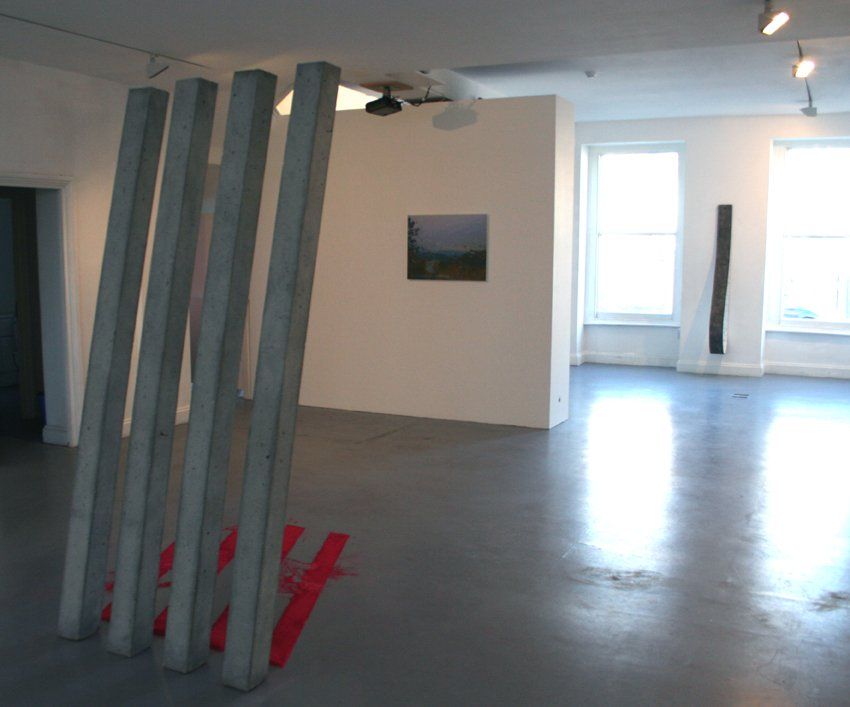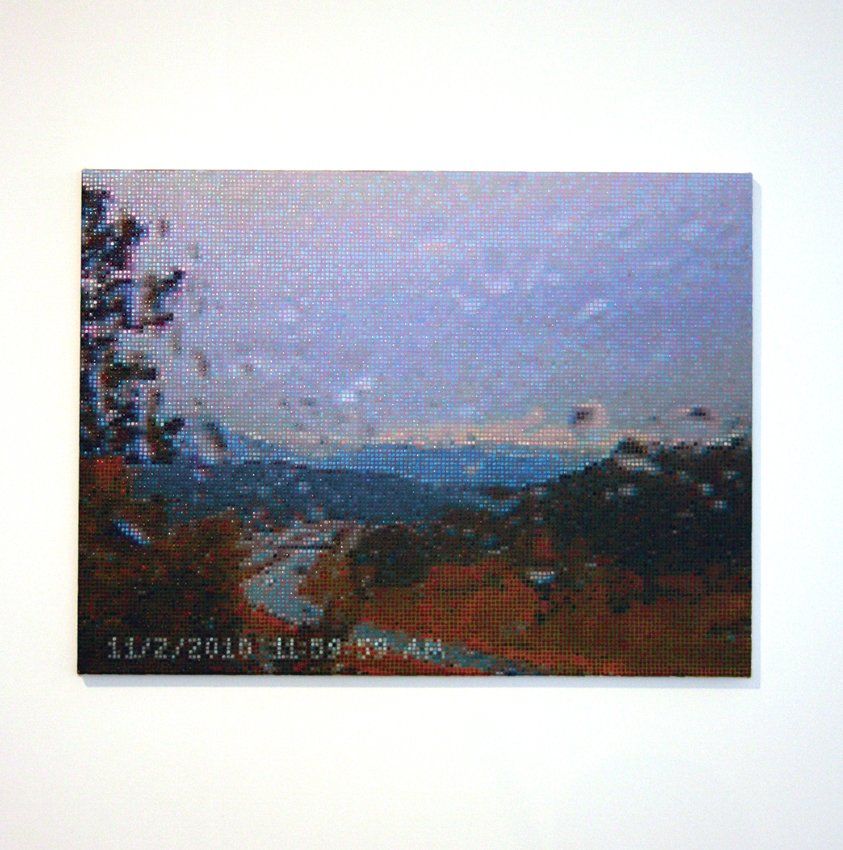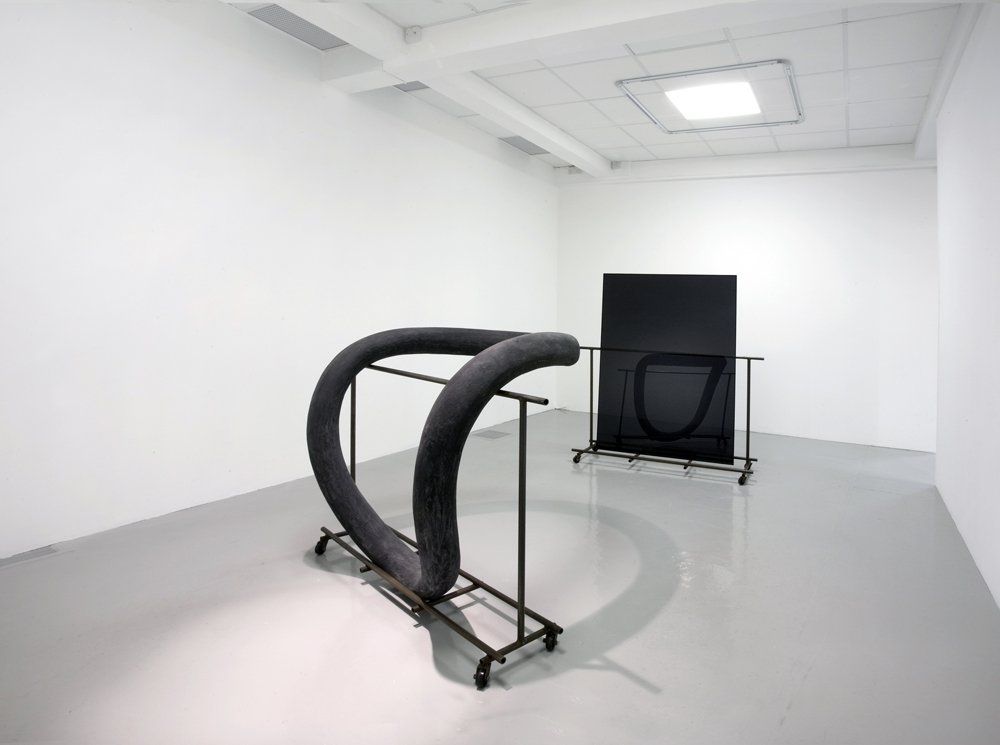SARAH ROSE ALLEN - CLARE GOODWIN - DAN HAYS - HELENE KAZAN - CHARLES MASON
curated by Fieldgate Gallery
Angus-Hughes Gallery
Private View: Friday 24th February, 6-9pm
Exhibition runs: Feb 25th – March 18th
With repetition embedded within their modus operandi, these artists appear to be paying a more respectful acknowledgment to their Modernist predecessors. Some use repetition in series, some as motifs, while for others it is simply a form of process in the making of the work. However, on closer inspection, there is mischief to be had, as unexpected references inform their practices. From domesticity in the form of 70s wallpaper designs to architectural systems; from an inquiry into optics to inversions of the monumental, there is an eclectic range of concerns amongst these artists that ruptures the surface appearance of deference.
SARAH ROSE ALLEN
Sarah Rose Allen’s video projection, ‘cup’, examines our relationship with the relentless passing of time and our attempts to hold on to or wish away particular moments. The work creates a parallel world in which time passes, but the usual markers of that progress (the filling up of the cup) do not take place: an attempt is being made to halt time, to capture ‘now’. The atmosphere is ambivalent - is this a pleasingly fascinating frozen-but-moving image, or an eerie, unnatural occurrence whereby the failure to let go of a moment invokes a state of Beckettian absurdity in which no amount of work gets the job done?
CLARE GOODWIN
Clare Goodwin’s purposely-skewed logic of formal compositions describes the rub between the design impact and social significance of motifs as markers of a particular period, specifically the 1970s and 1980's. Through the careful composition of colour and line, many of her works convey a feeling of limitation and movement, conformity and dissent that cleverly conjures that period’s conjunction of tight social codes with immense societal upheaval. Painted thinly and with extreme precision, often leaving large sections of the canvas blank, what comes to the fore is the delicate relationships between forms, the (mis) alignments and chance encounters between angles, straight edges and curves. Old style first names as titles such as Andrew, Gareth, Helen, conveys the notion that her paintings are also a form of abstracted portraiture and sets spinning narrative fictions featuring the eponymous characters and their daily lives. There is a gap between the mute abstraction of some of Goodwin’s work and the stories she ignites by way of the works’ titles. These don’t explain the work, but open it out to imaginary scenes like a book opening out its pages. Clare Goodwin appears courtesy of Rotwand Gallery, Zürich.
DAN HAYS
Dan Hays constructs paintings that question the screen interface, using low-resolution images gleaned from the Internet. Increasingly high definition and contrast ratio configures an ever more passive observer, enthralled by illusions of optical verisimilitude. With touches and daubs of paint, touch-screen technology is offered a flawed gestural counterattack. Connections to the history of painting, between the classical and the sublime, or Impressionism and Symbolism, are not explicit, but are shown to be a latent quality of any fugitive frame of a You-Tube video or landscape webcam. Tending towards abstraction through disintegration, a broader sense of longing for something lost is suggested. The digital screen’s icy crystalline matrix, seamless deliverer of watery flows of information, is rendered by pigmented oily mud on a weave of fabric – a paradoxical visual realm where illuminated pixel and physical brushstroke coalesce.
HELENE KAZAN
Helene Kazan’s Where Drawing meets Sculpture, appears to operate as a simple exploration of the optics within two and three dimensional repetitive drawing. However the tension created by its materiality and construction, mark its subversive ambition to demarcate and occupy the space it is situated in within the gallery, confronting the viewer simultaneously with a sense of curiosity and discomfort as it plays out a combination of these opposing roles. Helene’s practice is informed by her experience of growing up as a child in Beirut, and although this work’s monumentality is often interpreted as a modernist reference, its concrete physicality is in fact a reference to the materiality of the architectural landscape of Lebanon. The visible quivering friction between the contrasting 2D and 3D angled elements enhance its precarious nature, and allude to a complex embedded political narrative.
CHARLES MASON
Charles Mason’s works often begin with a charged but mutable image. In the case of Happy or Sad, the image of a mouth, a clown’s perhaps, which, when looked at from different angles or reflected in the accompanying Perspex, may seem happy, or sad? Similarly, if the image of a tear drop might have given rise to Hung up II, a practical problem arises of how to match the flatness of pieces of tile with the fluid curvature of the concrete? Mason’s sculptures are all marked by a tension between the materiality of the objects he uses and the plasticity of the feeling they evoke. Mason’s work deals with the representation of the self presented, as it were, on a theatre of inter-subjectivity…how to hold on to one’s sense of oneself given that identity is necessarily a fragile arrangement of social conventions, a compromise negotiated within the recesses of the psyche.
--Guillaume Condello
Charles Mason appears courtesy of Cortex Athletico Gallery.
